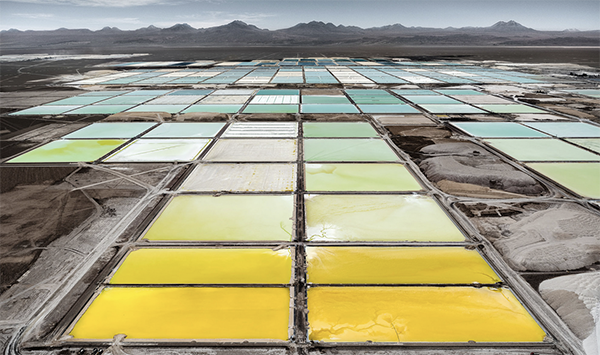Dear Reader,
One of the most common arguments you get from gearheads as to why electric vehicles are doomed to fail is the impact of lithium mining on the environment.
Horrendous photos of alien-like landscapes created over years of hardrock mining, or vast fields of pigmented evaporation pools stretching to the horizon often accompany such rhetoric.

And those spectacular visual sights are only the beginning. Today’s traditional lithium production methods require half a million gallons — more than 2000 tons — of water to produce just one ton of lithium.
Moving that much mass alone requires an enormous investment of energy. That means more energy needs to be created, which means more carbon dioxide is released into the atmosphere.
As a fan of electric cars, I have to say, these realities are hard to overlook.
After all, if you’re going to assume the standpoint that electric cars are part of a cleaner and better future, then modern day commercial lithium production simply does not comport with that imagery.
Because if we are just poisoning the world in another way, and burning no small amount of good ole’ fossil fuel in the process, why bother?
That’s a difficult question to answer, but it’s also a question that will very soon become irrelevant.
The Best Free Investment You’ll Ever Make
Our analysts have traveled the world over, dedicated to finding the best and most profitable investments in the global energy markets. All you have to do to join our Energy and Capital investment community is sign up for the daily newsletter below.
A New Form of Lithium Production to Change the Industry?
Lithium production is about to shed all of its historical shortcomings and transform the industry in the process.
There is a lithium technology company operating out of Calgary, Alberta, that’s well on its way to changing the way that rechargeable battery grade lithium is produced.
The process doesn’t require any mining.
It doesn’t even require exploration of any kind, as the location of the lithium is already well known, right down to the concentration levels and precise yield expectations.
Sound confusing? Let me explain.
It’s long been known that lithium metal can be found in small concentrations in oil field brines — more commonly known as "produced water" in the oil and gas industry.
This is the water that’s injected deep into the earth to squeeze fossil fuels to the surface, and nationally, we use a huge volume — somewhere on the order of 20 billion barrels per year.
Turning Dirty Water Into Tomorrow's Rechargeable Batteries
Just recently a Calgary-based lithium extraction technology firm publicly demonstrated that it could extract 99.5% battery grade lithium carbonate from brines showing concentrations of 35mg/l lithium — that's ten times more than what major oil and gas production operations in North America have reported.
The process is fast, efficient, and presents no additional impact on the environment at all.
A facility is simply hooked up to process already collected brine, returning the water to the pond following filtration.

Instead of taking 10-12 years to get a new mine up and running, lithium production from produced water can start in as little as a few weeks.
It gives energy companies the opportunity to diversify into lithium production, and it gives lithium the opportunity to actually full-fill its end of the bargain — minimum environmental impact.
At a time in history when we're about to see massive industrial and commercial shifts into a post-carbon economy, this could be one of the most exciting tech stories of the decade.
To get the full story on this company, and where it could be headed in the next couple of years, check out my video presentation.
It’s informative and it’s entertaining, and best of all, it’s free.
Fortune favors the bold,

Alex Koyfman
His flagship service, Microcap Insider, provides market-beating insights into some of the fastest moving, highest profit-potential companies available for public trading on the U.S. and Canadian exchanges. With more than 5 years of track record to back it up, Microcap Insider is the choice for the growth-minded investor. Alex contributes his thoughts and insights regularly to Energy and Capital. To learn more about Alex, click here.





